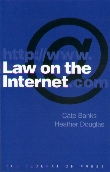|
Over the past few years, the Internet has revolutionised
legal research in Australia. This revolution has manifested
itself in a number of ways.
First (and foremost), the Internet gives unprecedented access
to recent decisions. Any lawyer in Australia can access decisions
of the High Court, intermediate Australia appellate courts,
and overseas appellate courts (such as the House of Lords, the
US Supreme Court and the Canadian Supreme Court) on the same
day that the decision is handed down, and often within minutes
after the decision is handed down.
Secondly, Internet access has made legal research extraordinarily
cheap. No longer is it necessary for lawyers to maintain subscriptions
to a wide variety of law reports, legislation services and journals.
Subscriptions which used to cost tens of thousands of dollars
annually are now entirely superseded by free resources on the
Internet.
Thirdly, Internet legal research is highly convenient. No
longer is it necessary to visit a law library in order to research
even the most recent enactments and decisions from even the
most obscure jurisdictions. Now - armed with nothing more than
a desktop or laptop computer, a modem, and a subscription to
an Internet Service Provider - the lawyer can do all this, and
more, whether from the office, from home, from a hotel room,
from the client's place of business, or even from an "Internet
Café".
Fourthly, the Internet provides searching and indexing facilities
which make legal research far more efficient than traditional
"hard copy" research. Consider the situation where
one is attempting to construe a particular form of words, whether
used in an Act of Parliament or in a private contract. Using
traditional research methodologies, even for the most competent
legal researcher it may be almost impossible to find a decision
in which that precise form of words received judicial consideration.
Now, in a matter of minutes, Internet research should turn up
any case in which the same phrase appears.
Acknowledging that the Internet has so much to offer practising
lawyers, the authors of this new publication make a useful contribution
by identifying those sites which are most immediately helpful
to members of the profession - and, as the authors observe,
to "students, consumers [and] commentators" who "want
to find web addresses to law-related material on the web quickly,
without having to trawl labouriously through fruitless online
searches".
For lawyers who are not already adept at Internet legal research,
this book will undoubtedly provide a useful starting-point.
Even for those who are already experienced Internet legal researchers,
this book offers some helpful pointers to less familiar websites,
especially in Part Three which collects "Subject Specific
Sites" under convenient chapter headings. Yet, the very
things which make the Internet such a useful resource for practising
lawyers limit the usefulness of this book, or any book like
it.
Despite every effort to ensure that the book is up-to-date
at the time of publication, the evolutionary nature of the Internet,
and the extraordinary speed with which it is growing, necessarily
mean that such a book is out of date even before the printer's
ink is dry.
Take, for example, a lawyer attempting to find current UK
legislation. This book points to Her Majesty's Stationery Office
- "The Stationery Office Online" - at:
http://www.tsonline.co.uk
However, that address has already changed to:
http://www.hmso.gov.uk/legislation
In any event, there is a newer and much better website providing
access to UK legislation. It is the British and Irish Legal
Information Institute (BAILII), at:
http://www.bailii.org
Recognising this problem, the authors advise that their work
"will be updated periodically on the publisher's website
at www.fedpress.aust.com".
This is a useful idea, save for the fact that the publisher's
own website was "down" when this reviewer attempted
to check it. In any event, the need to update this book from
a website tends to beg the question as to why one would commence
legal research from a "hard copy" publication, rather
than one of the many websites which offer up-to-date legal research
links.
Apart from the initial guidance which it can offer to people
who have almost no Internet experience, the whole concept of
a "hard copy" guide to Internet research contradicts
all of the benefits which the Internet has to offer legal researchers.
Why pay for a book, when equally or more comprehensive collections
of legal research links (including several designed specifically
for Australian lawyers) are available, on-line, at no cost?
Why go to the effort of transcribing website addresses from
a book - with the risk that one letter out of place will take
you to the wrong website - rather than using "hotlinks"
from any of the free links collections available online? Why
spurn the extraordinary convenience and efficiency of the Internet,
by constricting your research through the use of a "hard
copy" guide which cannot replicate the Internet's convenience
and efficiency?
To anyone thinking of buying this book, I would suggest that
you first try "surfing" a number of the leading Australian
Internet legal research sites, such as:
Then, if you still feel the need for a "hard copy"
guide to Internet legal research, this book is as good as any
on the market.
|

